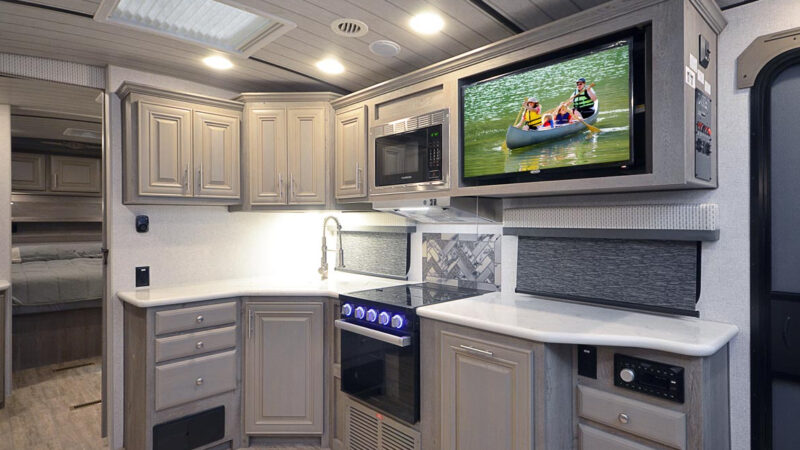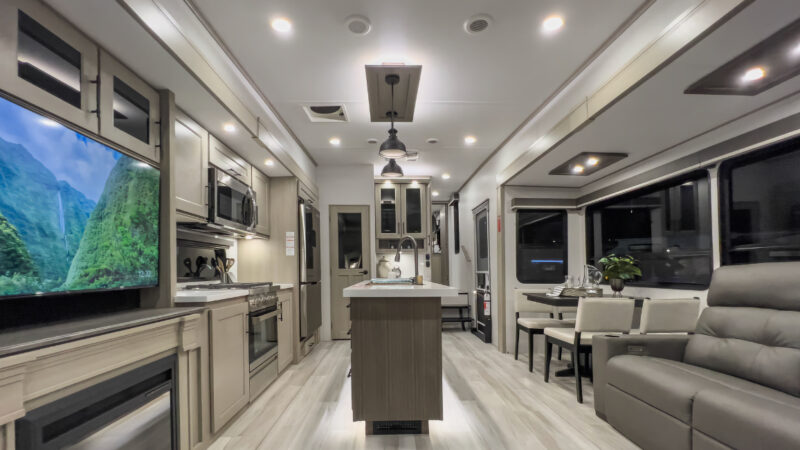Runhood Rallye 600 Pro Power Station Review: A Modular Solution for Home and Travel
If you don’t follow the portable power station market closely, you would be excused for thinking there hasn’t been much new or innovative in recent years. A cursory glance at the options available often reveals numerous iterations of the same design we’ve seen for nearly a decade. But dig a little deeper, and you’ll find there are some manufacturers who are finding ways to push the envelope and deliver something unique and exciting.
One such company is Runhood, which has taken a modular approach to creating portable power solutions. Instead of offering a simple one-size-fits-all charging device, the company has built an entire ecosystem around its powerful batteries. Those power cells connect with a range of accessories, giving users multiple options for staying charged, both at home and on the go.
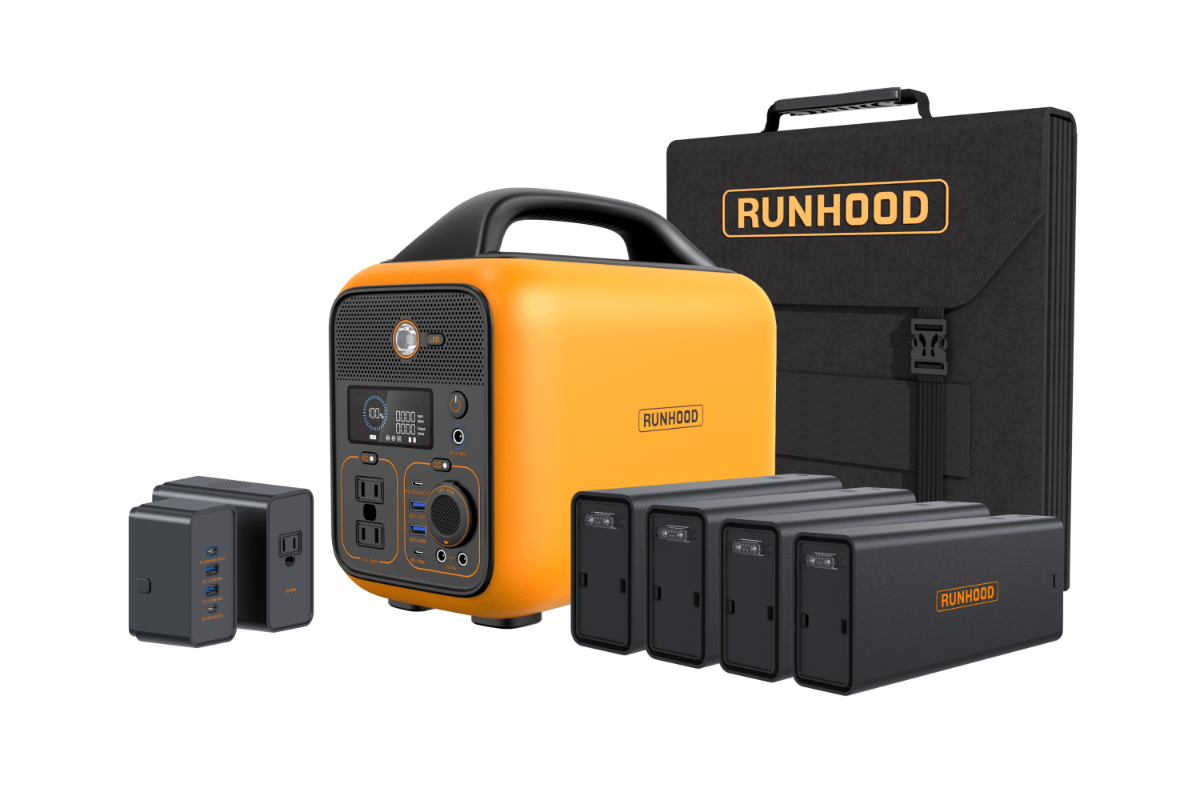
Photo Credit: Runhood
What is the Runhood Power Ecosystem?
At the heart of the Runhood portable power system are the company’s Energy Bar battery packs. These units have a 324-watt-hour capacity and offer varying levels of output based on the accessories they connect to. On their own, the batteries have no charging ports, but they do have a proprietary connector that allows them to interact with Runhood’s entire product line.
In addition to the Energy Bars, Runhood sells the Rallye 600 Pro power station, a 110-volt AC power module, and a 256-watt USB module. Each of those accessories connects to the battery packs to create a portable power ecosystem. Those devices are further supported by the company’s 100-watt solar panel, which facilities charging in the field.
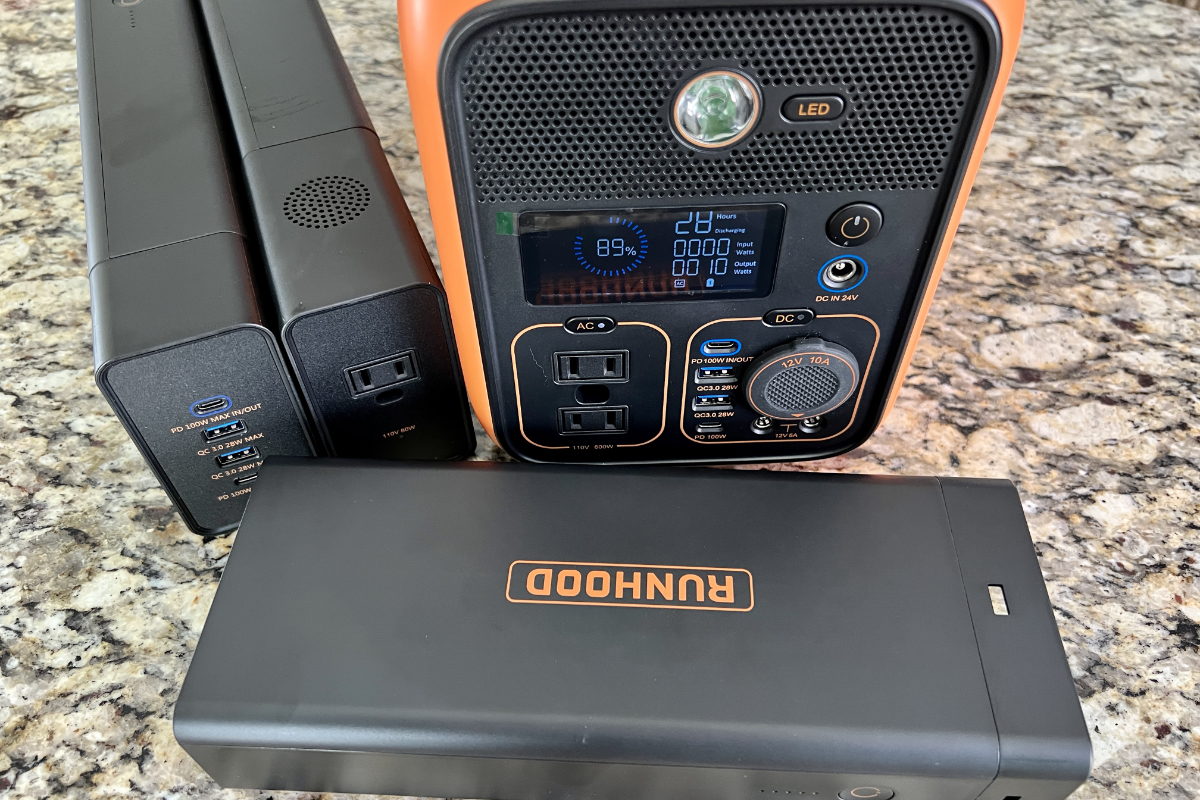
Photo Credit: Kraig Becker
How it Works
The Energy Bars don’t come with any standard charging ports built-in. This makes them somewhat useless on their own, although a proprietary connector on one end allows the power cells to plug into Runhood’s line of accessories. Each battery also has a power button on top and a set of five LED lights. Pressing the power button turns the battery on and illuminates the lights to indicate the current charge.
Similarly, the standard Rallye 600 comes with a set of charging ports for external devices, a built-in LCD screen, and an LED flashlight, and two batteries. Users can insert one or two Energy Bars into slots located on the back of the unit, where they’ll begin charging using the included AC adapter or a solar panel. Once in place, the batteries can also supply energy to the power station’s charging ports, which in turn provide a charge to smartphones, tablets, and other electronics.
The Energy Bars can also be used independently of the Rallye 600 by connecting one of the charging modules onto the end. Doing so turns the power cells into a giant battery pack with either four USB ports (two USB-A and two USB-C) or a single 110-volt wall outlet. This creates a charging solution that is more portable than carrying around the power station but still offers a surprising amount of capacity. This mode is ideal for users who want a charging option that slips more readily into a backpack or suitcase, although it is important to point out that the 324-watt battery is too large to carry on an airplane.
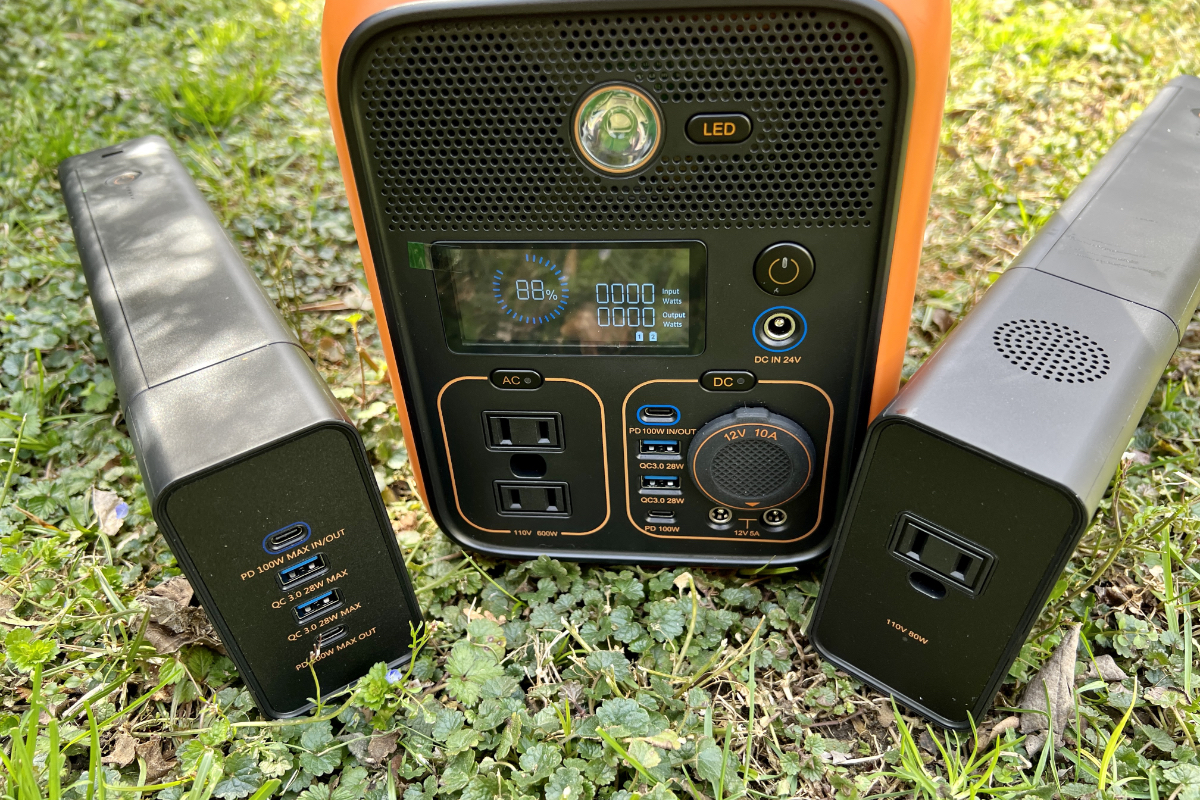
Photo Credit: Kraig Becker
The Runhood Ecosystem in Action
Now that we understand how the Runhood portable power system works, how does it perform? As it turns out, this modular approach has advantages and disadvantages, but overall it is a unique and practical way to charging on the go. In theory, the swappable power cells give you as much or little capacity as you need, with the ability to add more when necessary. And while the Rallye 600 only has two battery slots, the Energy Bars are hot-swappable, meaning you can replace a depleted battery with a fresh one at any time without losing power.
With two Energy Bars in place, the power station has a capacity of up to 648 watt-hours and an output of 600 watts. Those are relatively low numbers compared to the larger models offered by the competition, but the Rallye 600 balances that out by being lighter and more portable. Tipping the scales at just 15.9 pounds, the unit is easy to carry and transport. And while its energy output will never exceed the 600-watt mark, adding additional batteries does increase its overall capacity.
Runhood’s power station comes with two USB-A QC 3.0 ports and two USB-C PD (power delivery) ports, one of which is bi-directional, meaning it can recharge the device when needed. It also has a 12-volt port like the one found in your car and two 12V barrel-style chargers. It also has two standard 110-volt AC wall outlets, but curiously these are the two-pronged versions which means they don’t accept appliances or gadgets that use a power cable that includes a ground. That could be a limiting factor when plugging devices into the Rallye 600, but this unit isn’t designed for use with high-capacity appliances anyway.
Considering its size and weight, the Rallye 600 is a well-built power station with a good selection of charging ports. It allows users to plug as many as nine devices into the unit at any given time, although most of us will rarely use more than half of those ports simultaneously. But if you want to recharge your phone, tablet, and laptop—along with headphones, speakers, and other small devices—Runhood more than has you covered.

Photo Credit: Runhood
What’s in the Box?
For our review unit, Runhood sent us the Rallye 600 Pro package. This kit comes with everything you need to get the most out of Runhood’s modular ecosystem. This option includes the power station itself, plus four Energy Bar battery packs (1296 watt-hours of capacity) and both the USB and AC add-on modules. It even includes the 100-watt solar panel in the package, which only adds to the system’s versatility.
Runhood also includes plenty of options for keeping the power station and its batteries charged at all times. An AC adapter that plugs into a standard home wall outlet is included, of course, as is a 12-volt charging cable for use in a vehicle. But the company also ships a solar charging cable that connects to its solar panel and most others on the market. There is even a cleverly-designed cable that allows the Energy Bars to recharge directly from the solar panel without plugging into the Rallye 600 at all.
Having all of these accessories included in the Rallye 600 Pro kit really shows off the versatility and power of Runhood’s system. It makes using the battery packs, power station, solar panel, and modular adapters convenient and easy. And while most of the items are available separately, the convenience level increases exponentially when you have all of the independent parts at your disposal. But if you don’t need all of that, there are several other options to choose from with varying numbers of batteries and accessories.
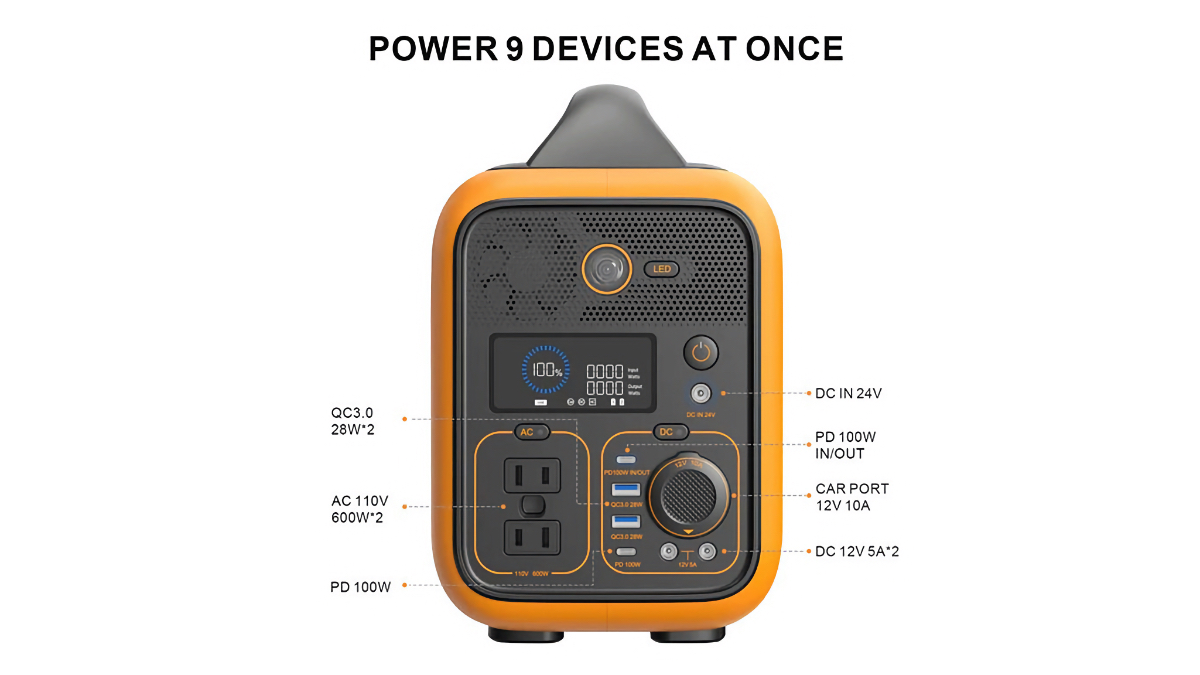
Photo Credit: Runhood
Other Features
As with most portable power stations, the Rallye 600 has an LCD screen that provides a slew of information. This display isn’t particularly noteworthy, but it is bright, clear, and easy to read. It shows the current charge levels of the installed batteries and which charging ports are active. It also provides an estimate of how long it will take to either recharge the Energy Bars or deplete them of power. This is all pretty standard stuff, but everything is neatly laid out and easy to understand, which isn’t always the case with other manufacturers.
The Rallye 600 also has a built-in flashlight with two brightness settings and an emergency flashing mode. This is also fairly standard on most power stations but is a handy option to have when needed. The light is bright enough to illuminate much of the interior of an RV or a campsite. And because this unit is more portable than some of the competition, it is easier to move it around to where you need it most.
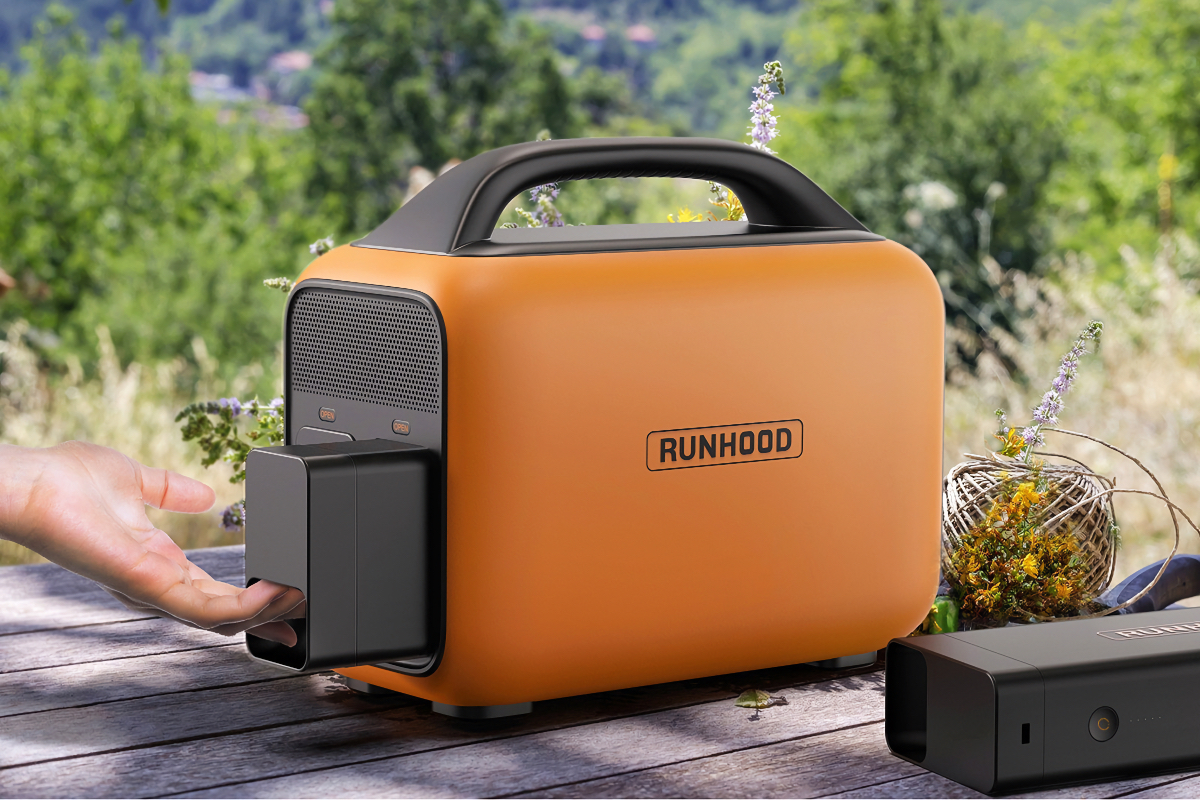
Photo Credit: Runhood
A Lot of Value
Based on its $1,399 price tag, it would be easy to look at the Rallye 600 Pro kit and think it is too expensive. After all, you can get bigger, more capable power stations for less money. But when you consider everything in the package—including the power station, four batteries, modular adapters, cables, and solar panel—it is a bargain for the right customer.
Not only do the four Energy Bar batteries provide plenty of capacity, their ability to be used independently of the Rallye 600 truly sets this system apart from the competition. It’s easy to imagine a scenario where you could use the power station outside at the campsite while one of the batteries charges a laptop inside your RV. Meanwhile, you can carry another battery on a hike to ensure that phones, GPS devices, and cameras stay charged in the field. While that may not be a typical use case for some people, mobile professionals, outdoor creatives, and RVers who enjoy their tech will undoubtedly see the value in this approach.
But perhaps best of all, Runhood allows customers to build the power ecosystem they need to meet their requirements. If the Pro kit has accessories you don’t need or is too pricy for your budget, there are other options available. The basic kit starts at just $699 for example. Later, you can always choose to add expand the ecosystem to fit your needs, picking and choosing the accessories that work for you. Want to expand your storage capacity? Just add another battery pack or two. Need to be able to charge more devices? Grab an additional add-on module. This versatility is unmatched by any other power station currently available, and it is a real game-changer for those who can utilize its potential.
To learn more about Runhood, the Rallye 600, and all the accessories in its lineup, visit the company’s website.
The post Runhood Rallye 600 Pro Power Station Review: A Modular Solution for Home and Travel appeared first on RV.com.





